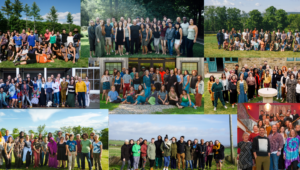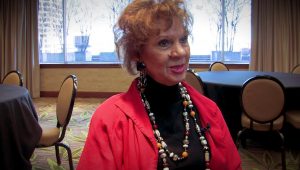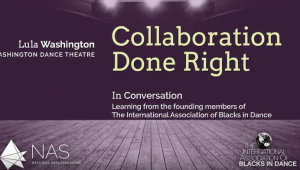Connect. Connected. Connecting. Connection. Connector. This is what we heard when we asked our Creative Community Fellows and you to talk about creative placemaking. Many saw themselves as connectors of people, across divides and within them – sharing experiences to inspire and motivate.
The idea of connection was frequently brought up when defining “community.” For many, and I know certainly for myself, community feels personal, it is almost synonymous with identity. It is a place where we feel we belong. We choose to identify in a certain way and this in turn places us in certain communities that we feel connected to. Although, there are also those communities that maybe we don’t self-identify with, but others place us there. Fellow Heather Zinger stated:
“‘Community’ for me means a place where I find connection and a sense of belonging. I think of it as a place where I can make everyday (and fairly pedestrian) contributions to the lives of those around me.”
Read all of Heather’s conversation with Elise Pepple.
Nicolle Bennett made a similar connection, noting:
“For me, community is a place where one feels connected to others; a place where one can develop and contribute as an individual to the collective good (community being different from uniformity). The development of the individual in my mind, leads to development of the community. I think this definition lies at the heart of what I feel to be the nexus of community development and revitalization – a place that allows full development of the self, which leads to a bond with and interest in others. In our quest for community, we have come to develop ‘communities’ within ‘communities,’ where people with mutual interests are often silo-ed from one another. What better way than through art, an opener, evoker, and connector – to bring us back to the sense of community we are longing for? The very elements that are thought to be needed in order for community-level change to occur, i.e. the building of social capital, coalitions/bridge-building, and a joint capacity for collective action, are natural extensions of our interactions with art. What is art but an expression of humanity, one that leads to a sense of purpose and outcome for the community? And it is hard to have purpose without expression, creativity, and/or innovation.”
Many also felt that their roles as cultural entrepreneurs is to ignite even more connection across and within communities that may not organically connect with one another. Nicolle further explains this idea, relating it to her definition of community:
“As a cultural entrepreneur, I see myself as a connector, a facilitator, and one that considers the big picture; one that recognizes and communicates the value of the arts to others (particularly other sectors), one that recognizes and hopes to connect the arts to what is already happening at the community level – not forming a separate community per se, but facilitating and creating partnerships. One that allows the arts, artists and the members of a community a voice, and connects artists to the people and communities they care about.”
Read all of Nicolle’s conversation with Sifiso Maposa.
Josh Rice and Emilia White talked about the power this work can have in connecting two seemingly different groups:
[soundcloud url=”https://api.soundcloud.com/tracks/159054652″ params=”color=ff5500&auto_play=false&hide_related=false&show_comments=true&show_user=true&show_reposts=false” width=”100%” height=”166″ iframe=”true” /]
Listen to Josh and Emilia’s entire conversation.
Kate Jopson and Mina Girgis had a similar discussion about the work they are doing:
[soundcloud url=”https://api.soundcloud.com/tracks/159054737″ params=”color=ff5500&auto_play=false&hide_related=false&show_comments=true&show_user=true&show_reposts=false” width=”100%” height=”166″ iframe=”true” /]
Listen to Kate and Mina’s entire conversation.
Katy Moonan also sees her role as that of a connector:
“I think the primary contribution is to create connections and relationships between individuals by creating opportunities to relate to one another through arts and culture…people naturally yearn for connections and community but it’s not always easy to find it or bring it about. I’ve met a lot of people who have similar experiences of isolation even living within a densely populated area where a lot of people would be having a similar experience of isolation right next to each other. There tends to be a lot of mistrust and not so much a space or a reason to come together and form meaningful connections, and that’s where cultural entrepreneurship can really be a powerful tool, it brings people together onto a playing field which encourages those kinds of connections that will create close community.”
Read all of Katy’s conversation with Rachel Hamilton.
Fellow, Casey Caldwell similarly noted that cultural entrepreneurs, “Foster connection, freedom of expression, and empathy with others to help communities improve themselves.” In his conversation with Amanda Thompson, the two discussed their motivations behind the community based work they are doing:
CASEY: The joy of encounter. As an actor, I love nothing more than the charge of a fully-lived encounter with another actor. As a director, I love encountering something alive bursting fresh from an actor. As a theater-maker, I love the encounter of hearing interviewees’ stories. I want to foster encounters in my community.
AMANDA: You say encounter and I say connect, but I think our motivations are the same. I experience joy when I can be part of something that helps people create and/or connect with each other. I love to live in vibrant communities, full of expression, and if I can use performance to make more of those places I will.
Read Casey and Amanda’s entire conversation.
Connecting people also serves as the driving force behind Sifiso Maposa’s work:
[soundcloud url=”https://api.soundcloud.com/tracks/159054938″ params=”color=ff5500&auto_play=false&hide_related=false&show_comments=true&show_user=true&show_reposts=false” width=”100%” height=”166″ iframe=”true” /]
“Connecting people within the cultural and creative industries to overcome the ‘silo’ effect is the work I do. This initiative connects creative entrepreneurs to opportunities within the continent and globally. The catalyst was my passion for arts and culture and the big role this industry can play in communities of Africa.”
“The driving force is purpose, desire and a passion to connect people with opportunities that lead to social and economic change for them and their communities. My motivation is seeing the cultural sector becoming an important art of public policies and conversations about development.”
Listen to Sifiso’s entire conversation with Nicolle Bennett.
On another note and in response to all the noise about creative placemaking lately, Elise Pepple talked about the concept of connecting as being an idealization:
“I think people talk about creative placemaking because of the general malaise generated by an over-mediated and under-connected world. I think we dream about connecting. I think this is the same reason people are obsessed with the idea of place and the idea of home. In a good way, I think it reflects what eaters know: flavor is local. So how do we celebrate local flavor?”
Is this idea of connecting with each other, members of within and outside of our communities a dream? As cultural entrepreneurs working in community, are we successful at facilitating these connections and making this dream a reality?
Read all of Elise’s conversation with Heather Zinger.
So, what do you think? Is creative placemaking all about connecting? As the artists and cultural entrepreneurs who initiate these encounters do we serve as the facilitators and connection makers? Tell us what you think and how you see your role.


